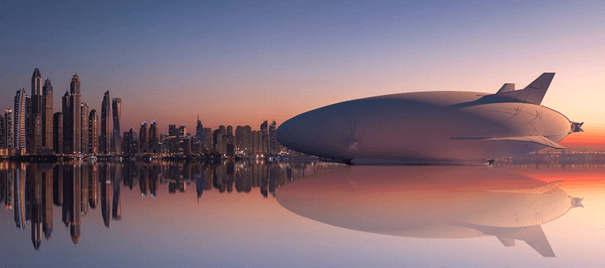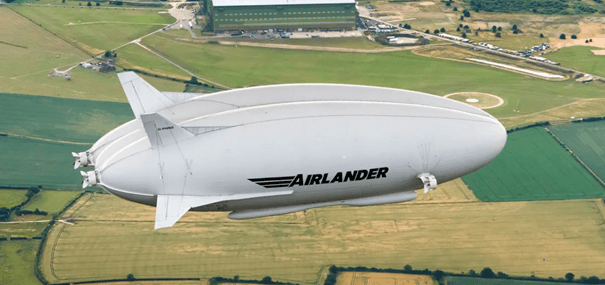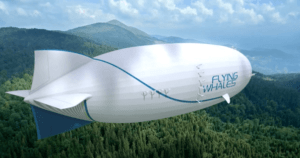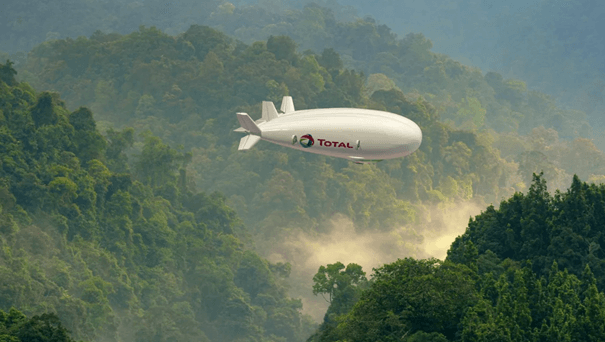Airships make a comeback

The development of the logistics sector has been remarkable, and nowadays mobility is essential to our lifestyles. At the same time, the transport sector (sea, rail, air and road) is considered the largest emitter of greenhouse gases. Its environmental impacts are numerous: air and water pollution, noise pollution and the saturation of urban transport infrastructures. To date, several solutions have been envisaged: for example, Amazon has pledged to reduce the carbon emissions of all its activities to zero by 2040. One possible solution is the use of environmentally-friendly vehicles. In this respect, dirigible balloons are a more environmentally-friendly way of transporting goods.
Safe technology could be the key to getting airships back in the air
Zeppelins fill the skies of Philip Pullman's epic trilogy of fantasy novels. The giant airships of his parallel universe carry mail, soldiers into battle and explorers across the Arctic.

Beyond the specialized literature on these subjects, the reality is rather disappointing. A handful of smaller airships fly proudly across the U.S. on promotional tours for brands like Goodyear and Carnival Cruise Line.
The good news is that soon, the real world may finally come close to Pullman's fantasy. In four to five years' time, if the pace of the project keeps up, one of the first production models of the huge Airlander nicknamed " The flying bum " will be the first airship to fly to the North Pole since 1928.
Nor will the Airlander be alone in the sky, far from it. In the near future, a new airship in the shape of a blue whale, measuring 150 m (as long as an A380 and as high as a 12-storey building), is due to rise above its assembly plant, sheltered from the heat and humidity of Jingmen, China. Its aim: to lift heavy objects in some of the most inaccessible places on the planet. Other manufacturers have ambitions on a par with Boeing's for this new era of airships. In fact, they expect the market to boom over the next 10 years, with around 150 of these airships in the air.
Historically, the companies that succeeded in selling their airships built them meticulously by hand, up to a certain size. Market demand called for the development of larger airships, yet these same manufacturers struggled to finance the development costs. Today's airship manufacturers are determined to rethink their methodologies and optimize their technologies to do things differently.
The new airships can carry heavy loads for much longer than conventional drones. drones
Hybrid airships produce a fraction of the pollution emitted by conventional aircraft. As a result, the British government and industry have since contributed around $1.3 million to Hybrid Air Vehicles (HAV - British aircraft designer and manufacturer) to help reduce the carbon footprint to zero, by developing an electric propulsion system for this unusual aircraft.
Despite its size, the Airlander 10 is still not large enough to lift heavy loads. We'll have to wait and see until the Airlander 50 goes into production, a project that has remained on the drawing-board of the design offices involved in the challenge. It is precisely this market that current competitors see as the best development opportunity for the airship's future.
The aircraft, shaped like a blue whale, goes by the catchy name of LCA60T (Large Capacity Airship 60 Tons). Despite its innovative and therefore different design, the airship is in fact designed to reduce the risk of explosions, as well as cutting design and operating costs, in order to ensure that its objectives are achieved in the long term. Behind its high-tech, electric motors and advanced ultra-capacitors, it's essentially a tried-and-tested Zeppelin, just like in Pullman's books.

The LCA60T is the product of the well-financed and ambitious Paris-based start-up Flying Whales, founded by Sébastien Bougon. The start-up raised around $320 million to manufacture the airship in France, near Bordeaux; then in Canada, on the outskirts of Montreal; and finally, in China, at Jingmen, near Wuhan.
Flying Whales has teamed up with a partner company to develop the methods needed to put airships into series production. With the support of another partner, Flying Whales has developed a 30 m-high automated "air-dock" to minimize the infrastructure that airships need on the ground.
Flying Whales' ambitions and appetite know no bounds except the air. By the end of 2021, it will begin the two-year development of its own hybrid airship for the French oil company Total. Named the Manta, it will be much smaller than the designs from HAV and Lockheed, and therefore more agile for exploring narrow access areas. Total envisages a fleet of 50 airships, to carry supplies and control equipment whose load would be too heavy for drones.

Airships will soon be making a comeback, and could revolutionize tomorrow's transport.Will retailers, and in particular their Supply Chain divisions, be ready to deploy this solution?
By Maryam El Himri
Sources : Hybrid Air Vehicles, Flying Whales, RTBF.be, BBC.com

